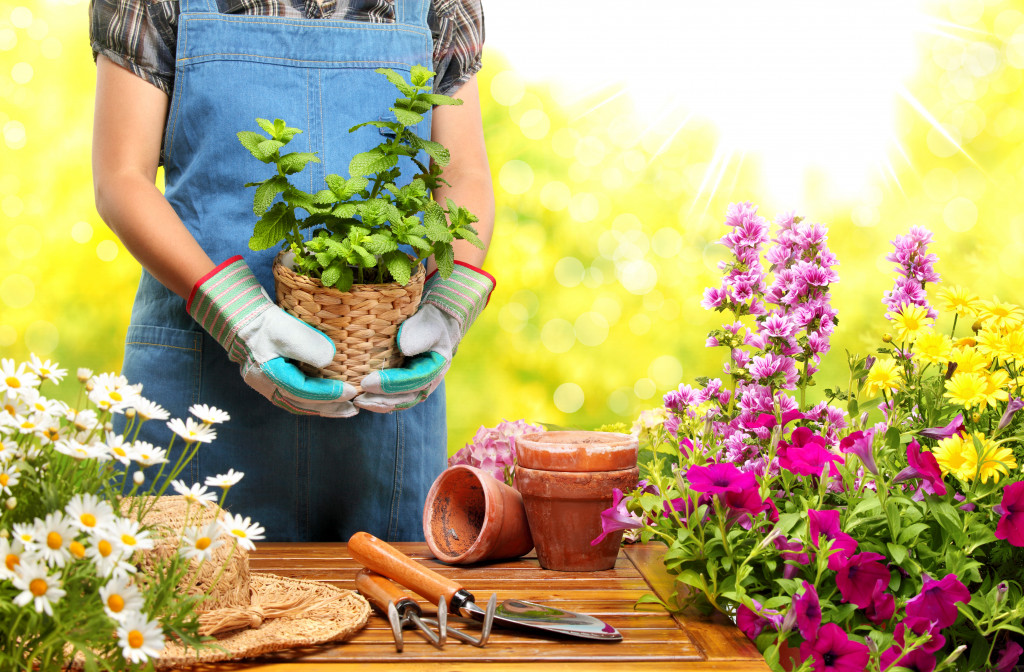The gardening scene in the United States is fascinating. There are so many different types of gardens, and each gardener has a unique way of tending to their plants. Also, the number of gardeners is growing because of the pandemic. Sadly, some gardeners give up before they’ve even started. They don’t know the essentials, and they get overwhelmed. If you’re new to gardening or want to improve your garden, you need to know the essentials. Here are the top five prime essentials for gardening:
The Right Soil
Soil is essential to plants because it provides the roots with the nutrients they need to grow. It also helps anchor the plant and protects them from wind and rain. There are many different soil types. Here are some of them:
- Clay soil: This type of soil is dense and holds moisture well. It’s also rich in nutrients, which is good for plants. The downside is that it can be challenging to work with, and it can be compact easily.
- Sandy soil: This type of soil is loose and drains quickly. It doesn’t hold nutrients well, so that plants may need more fertilizer. Sandy soil is easy to work with, and it warms up quickly in the spring.
- Loamy soil: This is the ideal type of soil because it has a mix of clay, sand, and organic matter. It drains well and holds onto nutrients. Loamy soil is easy to work with, too.
If you can’t tell the kind of soil or just simply don’t want to be bothered with choosing the right one, you can just buy topsoil. Excellent topsoil ensures that your plants get the nutrients they need to grow. They are also reasonably common, so looking for them is not hard.

Sunlight
Photosynthesis is the process that helps plants create food. During photosynthesis, the plant takes in light energy and transforms it into chemical energy. This energy converts carbon dioxide and water into glucose and oxygen. Glucose is a type of sugar that the plant can use for food, and oxygen is released into the air. Plants need sunlight to perform photosynthesis and use sunlight to help them grow.
The amount of sunlight a plant needs depends on the type of plant. Some plants, such as succulents, can tolerate low light conditions. Other plants, such as tomatoes, need at least six hours of direct sunlight daily. Most plants fall somewhere in between these two extremes.
If you’re unsure how much sunlight your plant needs, you can check the plant tag or do a quick Google search. Just remember that more sun doesn’t necessarily mean better growth. Too much sun can harm your plant.
Water
Water is essential for a plant’s growth. Water helps the plant take in nutrients, and it also helps to keep the plant cool. The amount of water a plant needs depends on the type of plant, the temperature, and the amount of sunlight the plant is getting.
For example, a succulent needs very little water because it stores water in its leaves. On the other hand, a tomato plant needs a lot of water because it’s a fruit-bearing plant. In general, most plants need about an inch of water per week.
You can water your plants with a watering can or hose. If you have a lot of plants, you may want to invest in an irrigation system. Such a system will ensure that your plants get the water they need. It also adds value to your backyard!
The average cost of an irrigation system is between $500 and $2000, so make sure to save for one.
Proper Landscaping
When it comes to gardening, proper landscaping is essential. Landscaping can make or break your garden. It can also add value to your home.
There are many different ways to landscape your garden. You can choose to plant trees, shrubs, and flowers. You can also add a water feature or a patio. The sky’s the limit!
The most important thing to remember is that you need to pick plants that are suited for your climate. If you live in a location that gets a lot of rainfall, you’ll want to choose plants that can tolerate wet conditions. On the other hand, if you live in a hot and dry climate, you’ll want to choose plants that can withstand drought.
You should also think about the maintenance involved in landscaping. Some plants, such as annuals, need to be replanted every year. Other plants, such as perennials, come back year after year with little to no effort on your part.
No matter what kind of plants you choose, proper landscaping is essential for a beautiful and well-kept garden.
To have a beautiful and thriving garden, it’s important to know the essentials. By keeping in these essentials, you’ll be on your way to gardening success! It’ll also ensure that you save a lot of money in keeping your garden healthy and looking beautiful for years to come.



